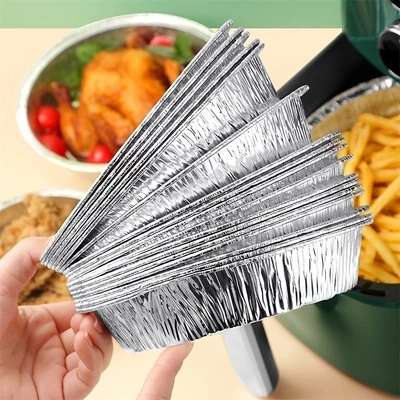Aluminium or aluminium that has been anodised is frequently used in the manufacturing of cookware. When it comes to using a certain material as cookware, there are pros and cons associated with each option. In the next paragraphs, both the positive and negative aspects of each of these items will be discussed.
As long as the pan is suitably thick, aluminium is a preferred material for the construction of kitchen equipment since it heats up rapidly and evenly. (Due to the phenomenon of hot spots, which occurs when certain areas of the pan heat up more quickly than others, food has a higher risk of catching fire in pans made of thin aluminium.) Aluminum Cookware has been in trend nowadays. Aluminium is a popular choice for utensils and other kitchenware due to its inexpensive cost and low weight. Aluminium cookware does, however, have some serious drawbacks that should be considered.
Aluminium is a soft metal that scratches readily and warps when subjected to high temperatures. You can find Aluminum Bakeware at many places. Aluminium has the significant problem of being a reactive material. This implies it will have an effect on both acidic and alkaline meals, such as citrus and tomatoes, cabbage and asparagus. The reaction alters the meal's colour, turning it an unappealing grey tone, and gives the dish an unpleasant metallic flavour.
Aluminium as a material for kitchenware has also been the subject of debate. Multiple studies have suggested that aluminium leaches into food, which may therefore contribute to the development of Alzheimer's disease. Home Kitchen Supplies should be of the best quality. The amount of aluminium you absorb from your cookware in a day is little, less than the amount in an antacid tablet. However, other research has shown no link between aluminum-containing cookware and cognitive decline.

Cookware made of anodized aluminium, a subtype of aluminium cookware, has been demonstrated to be safer than other types of aluminium cookware. Aluminium that has been anodized has had the surface of it toughened by a process that makes it more resistant to scratching and less reactive to foods that are alkaline or acidic.Disposable Aluminum Pans with Lids are always the best. It is well knowledge that heating food quickly in aluminium cookware results in alterations to the flavour and colour of the food, but these problems continue even at lower temperatures and longer cooking times.

Even if there are manufacturers of cookware made of anodized aluminium who may suggest otherwise, the fact of the matter is that anodized aluminium is notoriously difficult to clean.Disposable Aluminum Tray has an affordable price.
In conclusion, aluminium cookware is highly suggested due to its excellent heat conductivity, portability, and inexpensive cost in compared to several other options. Anodized aluminium cookware is also highly recommended because to its superior heat conductivity and mobility. The flavour and look of the food will change as a result of the cooking process, which may make the benefits of cooking with aluminium and aluminum-anodized cookware less appealing. This may be the case since the cooking process may affect the flavour of the meal.
